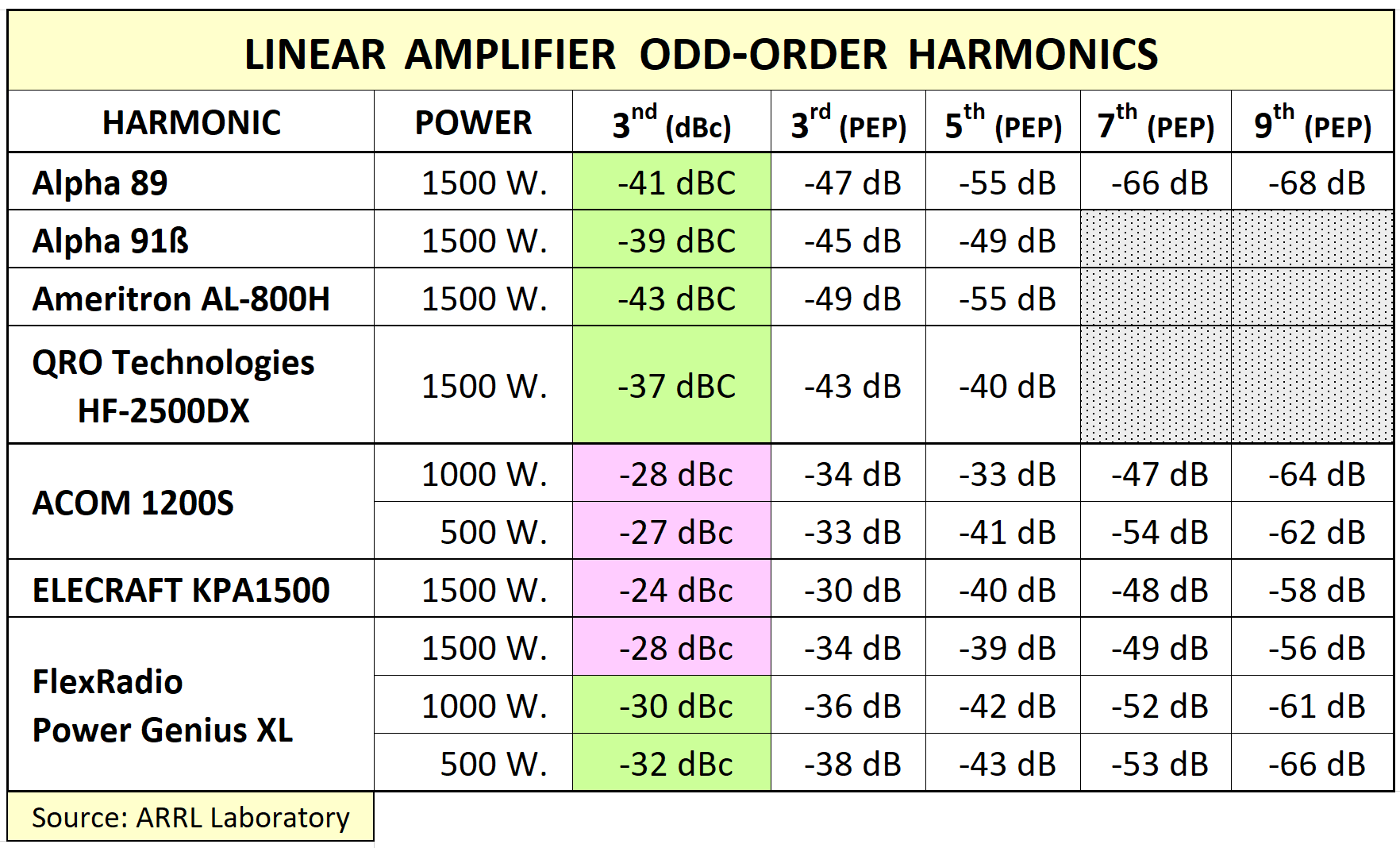Linear Amplifiers: Tubes vs. Transistors
INTERMODULATION DISTORTION (IMD):
THE Critical Factor in determining the linearity and bandwidth of the transmitted signal.
IMD is created when two or more audio tones beat with one another (intermodulate) in a non-linear device to produce undesired new tones.
The measured distortion of a linear amplifier, normally called Intermodulation Distortion (IMD), is expressed as the power in decibels below the amplifier's peak power or below that of one of the tones employed to produce the complex test signal.
There are two ways of stating IMD:
1: dBc (dB below the carrier power)
2: dB PEP (dB below the peak power)
As a rule of thumb, "dB PEP" is 6dB greater than "dBc".
Example: 30 dBc = 36 dB PEP
For many years (i.e., in the days before transistorized linear amplifiers), the ARRL was stating IMD in "dBc". In recent years the ARRL has switched to stating IMD in "dB PEP".
You must be careful when comparing IMD measurements made many years ago to IMD measurements made recently. Recent measurements will show inflated numbers (i.e., by +6dB) compared to older measurements.
A Look at Harmonic Distortion Products:
IMD measurements are typically stated, measured at the 3rd order (harmonic) frequency. But there are many more orders of harmonics as shown below. Odd-order harmonics are the important frequencies to look at. Even-order harmonic distortion is normally low enough that it is irrelevant.

Source: Rob Sherwood, NC0B
Notice that the higher-order harmonics get progressively weaker. This is not always the case. In some transmitters or amplifiers, (for instance) the 5th order harmonic might be slightly higher than the 3rd order.
Usually when the 3rd order product is depressed below the 5th order product, the amplifier is in compression, typically at rated output. If the measurement is made at half rated output this anomaly will usually disappear. This anomaly often does NOT appear on all bands.
When data shows a depressed 3rd order product, it is just a test anomaly that isn’t indicative of the linearity of the amplifier. This occurs with both the internal amp in a transceiver and an external “linear” amplifier.
NOW THE BAD NEWS:
In general, ALL transistorized Linear Amplifiers are about 15 to
20 dB worse in 3rd-Order IMD than Linear Amplifiers with tubes.
Here is a slide out of Rob Sherwood's (NC0B) Presentation on this topic:

As can be seen, typical transistorized linear amplifiers have a 3rd order IMD that is significantly worse than most of our newer transmitters.
A LOOK AT ARRL LAB MEASUREMENTS:
Here are the lab measurements of typical tube and transistor linear amplifiers:

As can be seen from the chart, ALL tube-based amplifiers at rated power have 3rd-order IMD that is significantly better than -30 dBc, whereas ALL transistor-based amplifiers at rated power have 3rd-order IMD that is worse than -30 dBc.
IMPORTANT NOTE:
REGION-1 3rd-ORDER IMD REQUIREMENT: 40 dB (PEP) Suppression!
Currently, none of the transistorized amplifiers meet this spec!
Resources:
- Alpha 89: Measurements by Ken Long, N0QO - via Rob Sherwood, NC0B
- Alpha 91ß: Rick Lindquist, N1RL (SK); "A QST Roundup: Three Legal-Limit linear Amplifiers",
. QST, September 1997
- Ameritron AL-800H: Rick Lindquist, N1RL (SK); "A QST Roundup: Three Legal-Limit linear
. Amplifiers", QST, September 1997
- QRO Tech. HF-2500DX: Rick Lindquist, N1RL (SK); "A QST Roundup: Three Legal-Limit linear . Amplifiers", QST, September 1997
- ACOM 1200S: Ward Silver, N0AX; QST "Product Review", July 2020
- Elecraft KPA1500: Joel R Harris, W1ZR (SK); QST "Product Review", March 2019
- FlexRadio PG XL: Terry Glagowski, W1TR; QST "Product Review", January 2021
